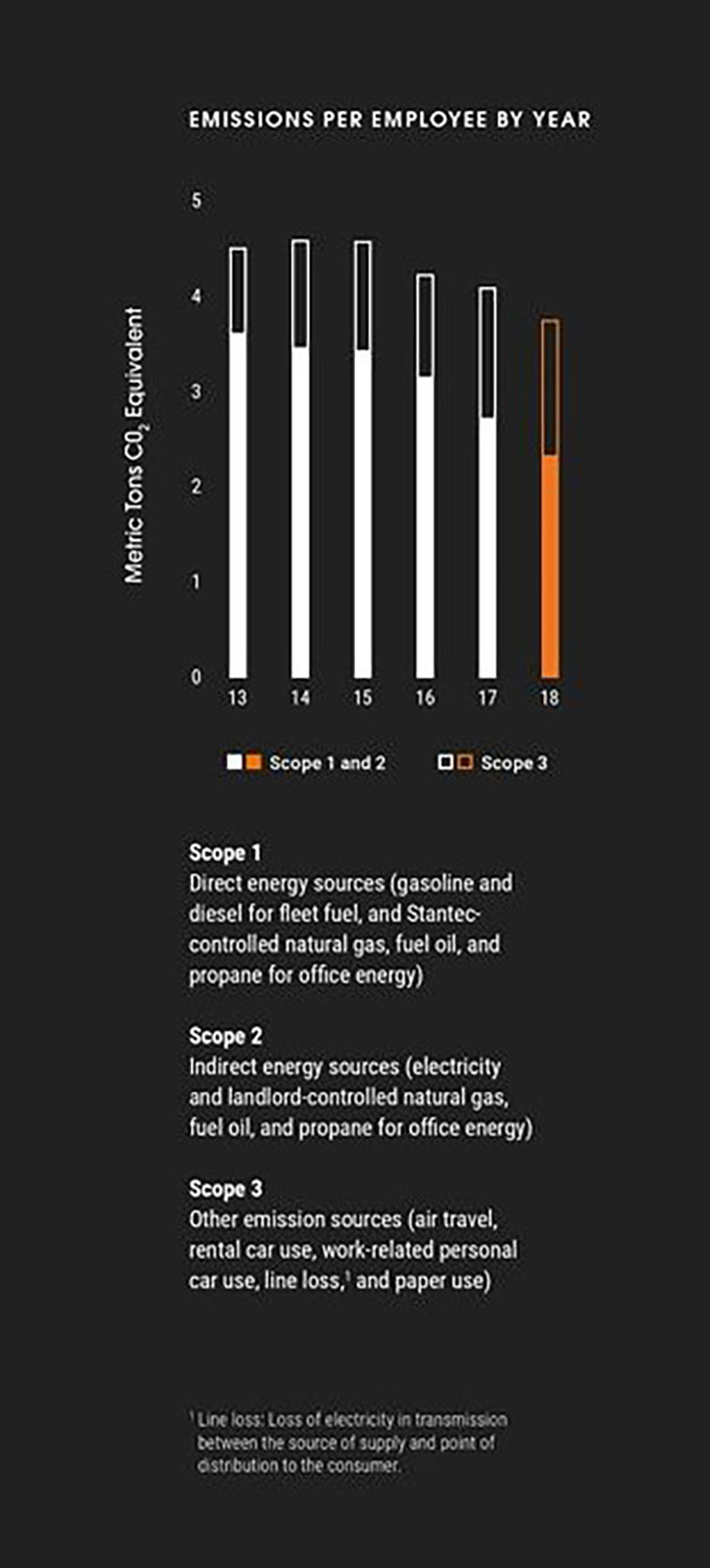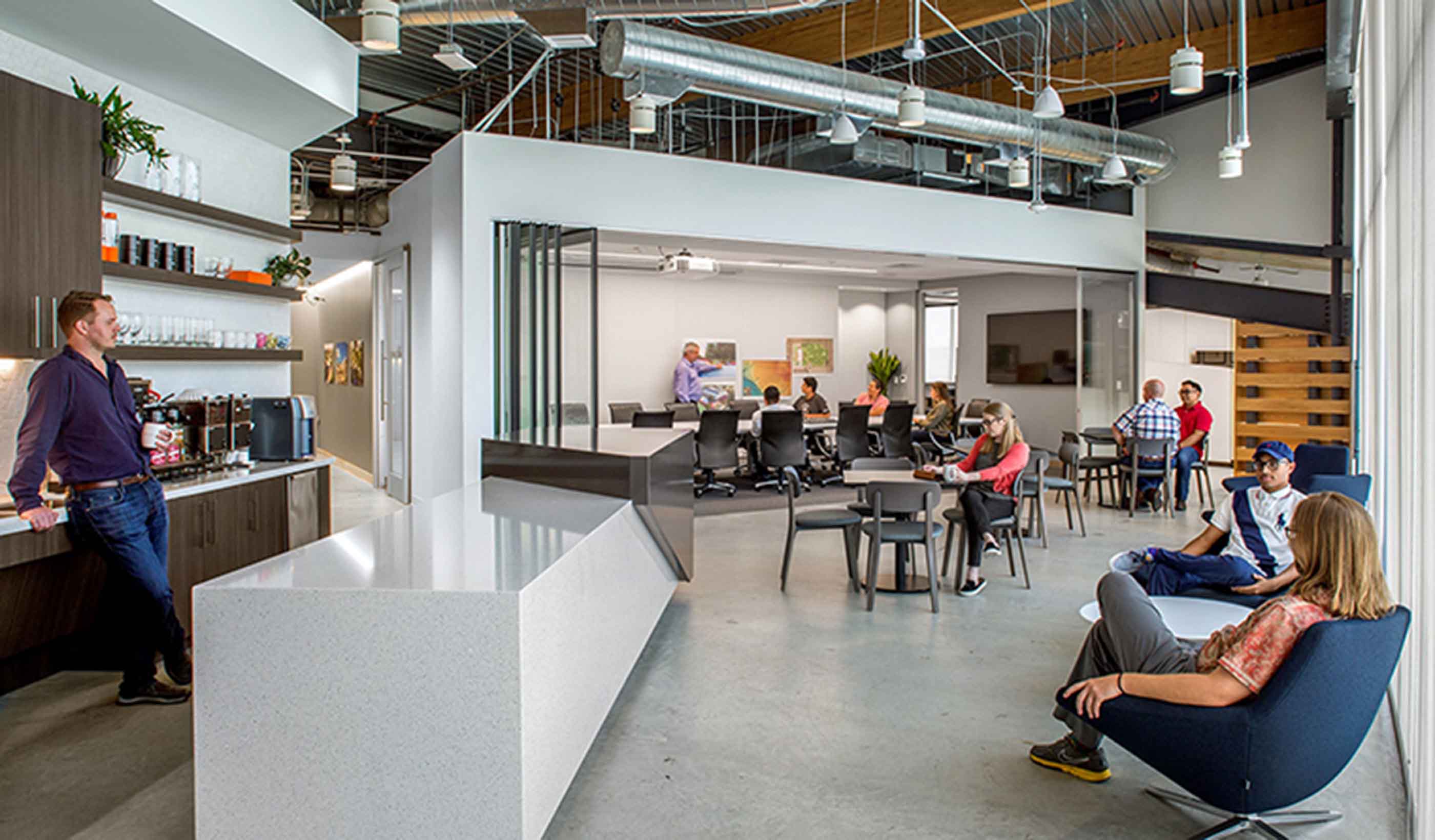From the Design Quarterly: What are sustainability rankings and why do they matter?
September 25, 2019
September 25, 2019
Ask an expert: Carrie Sabin, Stantec’s environment and sustainability program director, on why she thinks practicing sustainability is good business.
Carrie Sabin combines her expertise in sustainable practices with experience in business management as Stantec’s environment and sustainability program director. She ensures that Stantec walks the talk—aligning its commitments to internal sustainability with what it offers in design, engineering, and sustainability consulting practices to clients.
Carrie sat down with John Dugan, editor of the Stantec Design Quarterly, to talk about sustainability—from rankings to how sustainability makes smart business sense.
Carrie: I am the director of Stantec’s Corporate sustainability and environmental program. We follow an environmental, social, and governance (ESG) model. I lead our efforts for the environmental portion, helping to realize Stantec’s commitment to operate in a responsible way.

Stantec's New York, New York, office in a LEED Silver building.
For the social and governance side of things, I collaborate with colleagues so that our programs are compliant with international frameworks and incorporate industry best practices.
We work hard to incorporate the sustainability mindset into strategy, risk management, and in our integrated management systems. It’s also about furthering the thought leadership in the space; how can Stantec push the envelope as it relates to sustainability?
By incorporating sustainability into our mindset, it’s just easier to implement the day-to-day actions.
Carrie: Yes, absolutely, that happens all the time. We have experts internal to Stantec that we regularly use as subject matter support. For example, earlier this year we refined our materiality assessment, which is an evaluation of ESG topics related to our business and where we have the biggest impact on our world. We utilized Nicole Flanagan, a sustainability expert from our Environmental Services team, to facilitate a session held with our senior executives. Her team is helping with the follow-up exercises and producing the final deliverables. We hire our own experts because they are top-tier consultants who are well recognized in their respective fields of expertise.
Read and download the Design Quarterly Issue 06 | Destination Zero
Carrie: At every level, sustainability just makes smart business sense. If you’re going to run a company, operating in a sustainable manner will save you money and position you to be profitable well into the future. In the short term, sometimes there is a cost of investment, but often sustainability initiatives can also produce cost savings in the form of operational efficiencies. A visionary company realizes that sustainability is the smart business decision over the long haul.
Carrie: We have numerous examples, but from an environmental standpoint, I’d like to mention that members of our Procurement and Real Estate teams are our unsung heroes, working behind the scenes, and making positive changes in ways that others might not consider. Their efforts have been highly effective at making significant improvements in our corporate commitments.

For instance, Stantec has been able to reduce our per-employee Scope 1 and 2 emissions by 36% since our 2013 baseline year. We’ve been able to do that primarily by office consolidation. We have a presence in many cities so when we have a lease expiring and/or multiple small offices within the same market, we look at consolidation and moving into more energy-efficient buildings.
As Stantec designs our new office spaces, we try to optimize the space layout in a way that addresses resource conservation and employee well-being. We use interchangeable furniture and design, so that we can move it from office space to office space. There’s a huge focus on access to natural light, air quality, access to public transport and walkability—our current and future employees demand it! And, of course, as designers, we like to showcase leading-edge concepts as a key business development tool for existing and potential new clients.
Thinking about sustainably at every opportunity has really transformed the way we approach designing our work spaces. It has lowered our emissions and optimized our square footage per employee—while providing the private and collaborative spaces we need to do our work. The great news is that this approach has also provided significant cost savings at the same time. So, there’s a real business benefit to the approach. We find that by incorporating sustainability into our mindset, it’s easier to implement the day-to-day actions.
Carrie: When it comes to corporate sustainability, there are a handful of important rankings that investors depend on to evaluate a company’s ESG performance. Stantec works hard to live our values and be transparent about our sustainability journey. Our success is reflected in our top marks on the various rankings. For example, in 2018, Stantec received an A score from CDP (formerly known as the Climate Disclosure Project). This recognizes that not only are we aware of our risks, but we are actively managing and taking leadership steps toward addressing climate change.
CDP is the gold standard, a globally recognized climate change index. Over 7,000 companies reported through CDP in 2018 and fewer than 5% achieved a score in the A range. We’re incredibly proud of this accomplishment. We received the score for a combination of what we’re doing to manage our operations and physical facilities but also for how we are approaching sustainability in strategy and risk management, our connections to clients, and a commitment to sustainability by senior executives all the way up to our Board of Directors.

The LEED Gold Stantec office in Austin, Texas.
Carrie: We are. Stantec sets short-term, mid-term, and long-term emission-reduction goals, which support keeping global warming under 1.5 C. We’ve signed on to various climate programs. We push ourselves a little bit further each year.
For example, our Buildings group has signed on to the AIA Commitment to the 2030 Challenge, working toward a portfolio of carbon-neutral buildings by 2030. We’re also starting to measure our impact against the United Nations Sustainable Development Goals—focusing on the goals where we can have the greatest positive impact.
Carrie: I am happy to be able connect my personal passions with my day-to-day job. That’s amazing. I love being able to make a difference and to help implement change.